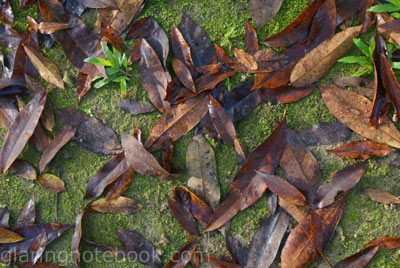Filler with the Sigma 17-35mm F2.8-4 EX.

It has good separation but poor rendition of contrasty out-of-focus highlights especially with trees.

Good color, albeit with traces of Sigma yellow. (And this is at 2500K mind you.) Patrick took this picture!

50cm minimum focus distance can be annoyingly far, but this lens harked back to film days. The later Sigma 17-35mm F2.8-4 EX DG was fixed for digital sensors and didn’t produce internal flare. Then again, internal flare is a rare occurence to me and where I shoot.

35mm.

Poled.

With a 2x teleconverter to make 70mm F8.0. I like the stippled bokeh effect.
This is, unfortunately, the only zoom lens I have in the ‘standard’ range – the other is the Vivitar Series 1 28-105mm F2.8-3.8. The 17-35mm, being a ultra wide-angle lens on full-frame, is chunky and rather big to be a everyday lens.
Many a time I wished I had a APS-C lens like the Sony Carl Zeiss 16-80mm F3.5-4.5 DT or the Tamron 17-50mm F2.8. Of course, my cash is prioritized to other ranges so this won’t get replaced all too soon. Kinda like how I had the Sony 18-70mm F3.5-5.6 DT kit lens for a very long time, since it wasn’t in a critical range – I’d want something wide to normal and normal to tele instead. Based on this philosophy, my ideal APS-C range would have the Tamron 10-24mm F3.5-4.5, Sony 35mm F1.4G and Sigma 50-150mm F2.8 EX DG II HSM or Sony 24-105mm F3.5-4.5. I could shoot with just one lens each day and not feel like I wish I brought the other lens!
Oh and Alphanatics is up! I should mention it since the Sony Alpha 9th August 2008 seminar… which also launched the site, of which I am one of the site admins.
dude, which would u get?
a 17-55 f/2.8 IS or
a 24-105 f/4 IS
On a Canon APS-C, a 17-55mm F2.8 IS; on a Sony APS-C, a Tamron 17-50mm F2.8.
On a Canon FF, a 24-105mm F4L IS; on a Sony FF, a 24-105mm F3.5-4.5 (much smaller than the F4L.)
I use, as my constant companions, the Sony 11-18mm and the Sony 18-200mm. Actually the 18-200 tests out well at all ranges, somewhat superior to the Tamron or like range, And can cover most all my needs!
But I just love the little (short) 11-18mm. It’s a baby- mine! No flare, pincushion or blatant curvature, except of course, at close up with too many straight lines vertical. Can be trusted, truly at 11mm, 15mm or 18mm. The 18-200mm, at 18-25mm, is only slightly better at the 25mm end.
Both are what I call moderate price range > say $400-$800 and worth it!
I gotta say I’ve used these by far the most on a Sony a100 (my main squeeze then), and now on a a700. The 11-18mm is topped out at f4.5, but given Sony’s great IS (image stabil), and the a700’s abilities up to ISO 1600, is very fun and accurate at any get togethers, family, friends or strangers. Daylight, dimlight or typical indoor light.
I admire your spunk in using a Vivitar of any persuasion! The only Vivitar I ever owned was a straight up 28mm, f2.8. Also the only lens I’ve ever dropped. Bounced back up with a bent rim, enough to prevent ever mounting filters again- but no other damage.
But, as for an all around lens, try the 18-200mm. And it’s light for its abilties.
bjohns: Your path matches my colleague exactly – 18-200mm + 11-18mm and A100 then A700! His 18-200mm is getting a bit old and unoiled so it focuses rather slowly now, at the risk of firing before focus is confirmed (even with Focus Priority). I agree with reviews that the 18-250mm is a much improved optic though and should be gotten for the money. The 11-18mm is indeed lovely, what more on full-frame where the vignetting disappears after 13mm!
My Vivitar Series 1 28-105mm F2.8-3.8 is pretty darn good, though, although I can see why the general perception of Vivitar is such since I have a few other Vivitars…
erm… on a non-camera related observation, the second picture seems awfully familiar.
My apologies Patrick, you have been credited! And thanks again for the Transformers The Movie special edition!